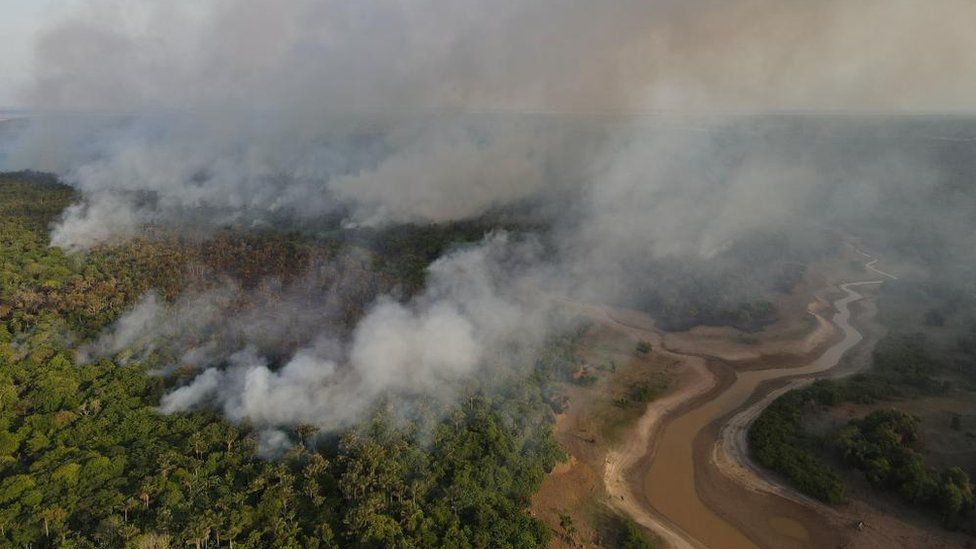-

-
-
Loading

Loading

The Amazon rainforest, often referred to as the "lungs of the planet" due to its role in removing carbon dioxide from the atmosphere, is being severely affected by climate change. A recent study has found that climate change was the main driver of the Amazon's worst drought in at least 50 years. This extreme drought was exacerbated by rapid deforestation, which has made the rainforest more vulnerable to weather extremes. The drought had a significant impact on ecosystems and millions of people who rely on rivers for transportation, food, and income. It was caused by a combination of El Niño, a natural weather system, and human-caused climate change. The researchers found that the Amazon is receiving less rainfall and experiencing higher evaporation due to rising temperatures. These changes in climate have made extreme droughts 30 times more likely, and they are now expected to occur every 50 years. The severity of the drought and its widespread impact make it different from previous droughts. If global warming continues, similar extreme droughts could become even more frequent. Scientists predict that if the planet warms by 2 degrees Celsius, such droughts could happen once every 13 years. This puts the resilience of the Amazon rainforest to the test, especially considering that around one-fifth of the rainforest has been lost due to deforestation in the last 50 years. Deforestation increases the vulnerability of the rainforest to droughts. Trees play a crucial role in retaining and releasing moisture, as well as cooling temperatures. The ongoing deforestation and climate change could push the Amazon rainforest to a "tipping point," where it undergoes rapid and irreversible dieback. This would result in the region becoming a significant source of carbon dioxide emissions. However, there has been some progress in combating deforestation. The rate of deforestation has declined, and there is a pledge to halt it completely by 2030. Urgent action to reduce greenhouse gas emissions and control deforestation can still protect the remaining Amazon rainforest. Stabilizing the global climate is crucial in preventing further damage to this vital ecosystem.